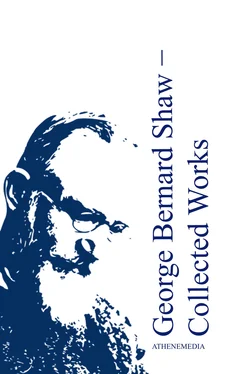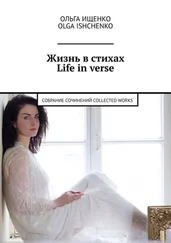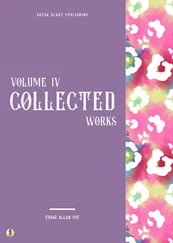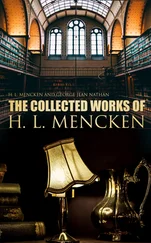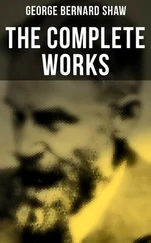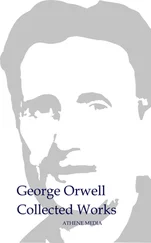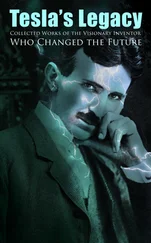THE RELIGIOUS ART OF THE TWENTIETH CENTURY
Creative Evolution is already a religion, and is indeed now unmistakeably the religion of the twentieth century, newly arisen from the ashes of pseudo-Christianity, of mere scepticism, and of the soulless affirmations and blind negations of the Mechanists and Neo-Darwinians. But it cannot become a popular religion until it has its legends, its parables, its miracles. And when I say popular I do not mean apprehensible by villagers only. I mean apprehensible by Cabinet Ministers as well. It is unreasonable to look to the professional politician and administrator for light and leading in religion. He is neither a philosopher nor a prophet: if he were, he would be philosophizing and prophesying, and not neglecting both for the drudgery of practical government. Socrates and Coleridge did not remain soldiers, nor could John Stuart Mill remain the representative of Westminster in the House of Commons even when he was willing. The Westminster electors admired Mill for telling them that much of the difficulty of dealing with them arose from their being inveterate liars. But they would not vote a second time for the man who was not afraid to break the crust of mendacity on which they were all dancing; for it seemed to them that there was a volcanic abyss beneath, not having his philosophic conviction that the truth is the solidest standing ground in the end. Your front bench man will always be an exploiter of the popular religion or irreligion. Not being an expert, he must take it as he finds it; and before he can take it, he must have been told stories about it in his childhood and had before him all his life an elaborate iconography of it produced by writers, painters, sculptors, temple architects, and artists of all the higher sorts. Even if, as sometimes happens, he is a bit of an amateur in metaphysics as well as a professional politician, he must still govern according to the popular iconography, and not according to his own personal interpretations if these happen to be heterodox.
It will be seen then that the revival of religion on a scientific basis does not mean the death of art, but a glorious rebirth of it. Indeed art has never been great when it was not providing an iconography for a live religion. And it has never been quite contemptible except when imitating the iconography after the religion had become a superstition. Italian painting from Giotto to Carpaccio is all religious painting; and it moves us deeply and has real greatness. Compare with it the attempts of our painters a century ago to achieve the effects of the old masters by imitation when they should have been illustrating a faith of their own. Contemplate, if you can bear it, the dull daubs of Hilton and Haydon, who knew so much more about drawing and scumbling and glazing and perspective and anatomy and 'marvellous foreshortening' than Giotto, the latchet of whose shoe they were nevertheless not worthy to unloose. Compare Mozart's Magic Flute, Beethoven's Ninth Symphony, Wagner's Ring, all of them reachings-forward to the new Vitalist art, with the dreary pseudo-sacred oratorios and cantatas which were produced for no better reason than that Handel had formerly made splendid thunder in that way, and with the stale confectionery, mostly too would-be pious to be even cheerfully toothsome, of Spohr and Mendelssohn, Stainer and Parry, which spread indigestion at our musical festivals until I publicly told Parry the bludgeoning truth about his Job and woke him to conviction of sin. Compare Flaxman and Thorwaldsen and Gibson with Phidias and Praxiteles, Stevens with Michael Angelo, Bouguereau's Virgin with Cimabue's, or the best operatic Christs of Scheffer and Müller with the worst Christs that the worst painters could paint before the end of the fifteenth century, and you must feel that until we have a great religious movement we cannot hope for a great artistic one. The disillusioned Raphael could paint a mother and child, but not a queen of Heaven as much less skilful men had done in the days of his great-grandfather; yet he could reach forward to the twentieth century and paint a Transfiguration of the Son of Man as they could not. Also, please note, he could decorate a house of pleasure for a cardinal very beautifully with voluptuous pictures of Cupid and Psyche; for this simple sort of Vitalism is always with us, and, like portrait painting, keeps the artist supplied with subject-matter in the intervals between the ages of faith; so that your sceptical Rembrandts and Velasquezs are at least not compelled to paint shop fronts for want of anything else to paint in which they can really believe.
And there are always certain rare but intensely interesting anticipations. Michael Angelo could not very well believe in Julius II or Leo X, or in much that they believed in; but he could paint the Superman three hundred years before Nietzsche wrote Also Sprach Zarathustra and Strauss set it to music. Michael Angelo won the primacy among all modern painters and sculptors solely by his power of shewing us superhuman persons. On the strength of his decoration and color alone he would hardly have survived his own death twenty years; and even his design would have had only an academic interest; but as a painter of prophets and sibyls he is greatest among the very greatest in his craft, because we aspire to a world of prophets and sibyls. Beethoven never heard of radioactivity nor of electrons dancing in vortices of inconceivable energy; but pray can anyone explain the last movement of his Hammerklavier Sonata, Opus 106, otherwise than as a musical picture of these whirling electrons? His contemporaries said he was mad, partly perhaps because the movement was so hard to play; but we, who can make a pianola play it to us over and over until it is as familiar as Pop Goes the Weasel, know that it is sane and methodical. As such, it must represent something; and as all Beethoven's serious compositions represent some process within himself, some nerve storm or soul storm, and the storm here is clearly one of physical movement, I should much like to know what other storm than the atomic storm could have driven him to this oddest of all those many expressions of cyclonic energy which have given him the same distinction among musicians that Michael Angelo has among draughtsmen.
In Beethoven's day the business of art was held to be 'the sublime and beautiful.' In our day it has fallen to be the imitative and voluptuous. In both periods the word passionate has been freely employed; but in the eighteenth century passion meant irresistible impulse of the loftiest kind: for example, a passion for astronomy or for truth. For us it has come to mean concupiscence and nothing else. One might say to the art of Europe what Antony said to the corpse of Caesar: 'Are all thy conquests, glories, triumphs, spoils, shrunk to this little measure?' But in fact it is the mind of Europe that has shrunk, being, as we have seen, wholly preoccupied with a busy spring-cleaning to get rid of its superstitions before readjusting itself to the new conception of Evolution.
On the stage (and here I come at last to my own particular function in the matter), Comedy, as a destructive, derisory, critical, negative art, kept the theatre open when sublime tragedy perished. From Molière to Oscar Wilde we had a line of comedic playwrights who, if they had nothing fundamentally positive to say, were at least in revolt against falsehood and imposture, and were not only, as they claimed, 'chastening morals by ridicule,' but, in Johnson's phrase, clearing our minds of cant, and thereby shewing an uneasiness in the presence of error which is the surest symptom of intellectual vitality. Meanwhile the name of Tragedy was assumed by plays in which everyone was killed in the last act, just as, in spite of Molière, plays in which everyone was married in the last act called themselves comedies. Now neither tragedies nor comedies can be produced according to a prescription which gives only the last moments of the last act. Shakespear did not make Hamlet out of its final butchery, nor Twelfth Night out of its final matrimony. And he could not become the conscious iconographer of a religion because he had no conscious religion. He had therefore to exercise his extraordinary natural gifts in the very entertaining art of mimicry, giving us the famous 'delineation of character' which makes his plays, like the novels of Scott, Dumas, and Dickens, so delightful. Also, he developed that curious and questionable art of building us a refuge from despair by disguising the cruelties of Nature as jokes. But with all his gifts, the fact remains that he never found the inspiration to write an original play. He furbished up old plays, and adapted popular stories, and chapters of history from Holinshed's Chronicle and Plutarch's biographies, to the stage. All this he did (or did not; for there are minus quantities in the algebra of art) with a recklessness which shewed that his trade lay far from his conscience. It is true that he never takes his characters from the borrowed story, because it was less trouble and more fun to him to create them afresh; but none the less he heaps the murders and villainies of the borrowed story on his own essentially gentle creations without scruple, no matter how incongruous they may be. And all the time his vital need for a philosophy drives him to seek one by the quaint professional method of introducing philosophers as characters into his plays, and even of making his heroes philosophers; but when they come on the stage they have no philosophy to expound: they are only pessimists and railers; and their occasional would-be philosophic speeches, such as The Seven Ages of Man and The Soliloquy on Suicide, shew how deeply in the dark Shakespear was as to what philosophy means. He forced himself in among the greatest of playwrights without having once entered that region in which Michael Angelo, Beethoven, Goethe, and the antique Athenian stage poets are great. He would really not be great at all if it were not that he had religion enough to be aware that his religionless condition was one of despair. His towering King Lear would be only a melodrama were it not for its express admission that if there is nothing more to be said of the universe than Hamlet has to say, then 'as flies to wanton boys are we to the gods: they kill us for their sport.'
Читать дальше
